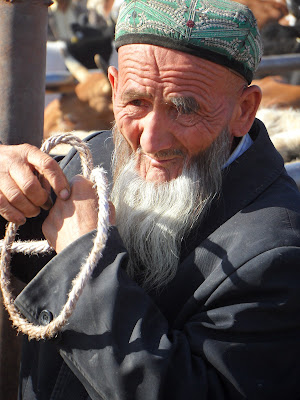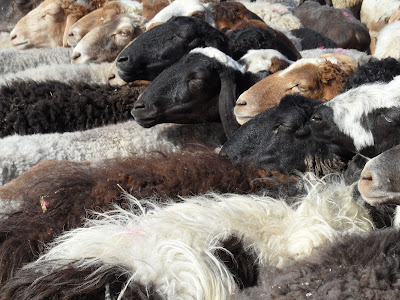Most countries turn their nose up nowadays, having had their fill in the past. In China, however, good old colonialism is very much en vogue. And it's not happening in some remote overseas territory no one has ever heard of, but right here, in China itself.
The thing is, China is home not only to the Chinese—or Han Chinese, to be more precise—but also to dozens of ethnic minorities. Some of these are well-known and well-loved the world over. Take, for instance, the people of that region in the southwest whose name shall not be mentioned. You know the place: mountainous area where chaps prance about in red dresses and a certain silver-haired American actor appointed himself as Minister of PR.
North of this region lies Xinjiang, a vast desert-like province the size of Western Europe. Xinjiang means 'New Territories', and, knowing that it holds enough oil and natural gas to fuel China's economy for a long time to come, this is exactly the way Beijing treats the place. Meanwhile, Xinjiang's Central Asian minorities—Tajik, Kyrgyz, Kazakh, and, especially, Uyghur—increasingly find their culture swamped by Han Chinese moving in from the east. Before the communist takeover in 1949 the Uyghur population made up 90 percent of the province's total population. Over the years, that number has dwindled to well below half. Unsurprisingly, mass migration has led to cultural dilution. Tensions came to a head in 2009, when severe riots in the city of Ürümqi left 200 people dead.
In Kashgar, the divide between the Han and Uyghur populations is painfully real. Minarets are dwarfed by modern highrises, underground shopping malls pull in customers from the street-level bazaars, and the characteristic houses in the old town are being razed to make way for the kind of faux-historical architecture that Han Chinese tourists are so fond of. Attempts have even been made to sanitise Kashgar's famous Sunday Market, where for centuries people from all over Central Asia have converged to buy and sell pretty much anything you can think of. But this is one part of the country that the Han Chinese have yet to conquer. The brand-new pavilion where a couple of traders have decked their stalls with garish souvenirs is swallowed up by the real market that surrounds it—a sprawling orgy of colours, smells and sounds that will never die down.
The thing is, China is home not only to the Chinese—or Han Chinese, to be more precise—but also to dozens of ethnic minorities. Some of these are well-known and well-loved the world over. Take, for instance, the people of that region in the southwest whose name shall not be mentioned. You know the place: mountainous area where chaps prance about in red dresses and a certain silver-haired American actor appointed himself as Minister of PR.
North of this region lies Xinjiang, a vast desert-like province the size of Western Europe. Xinjiang means 'New Territories', and, knowing that it holds enough oil and natural gas to fuel China's economy for a long time to come, this is exactly the way Beijing treats the place. Meanwhile, Xinjiang's Central Asian minorities—Tajik, Kyrgyz, Kazakh, and, especially, Uyghur—increasingly find their culture swamped by Han Chinese moving in from the east. Before the communist takeover in 1949 the Uyghur population made up 90 percent of the province's total population. Over the years, that number has dwindled to well below half. Unsurprisingly, mass migration has led to cultural dilution. Tensions came to a head in 2009, when severe riots in the city of Ürümqi left 200 people dead.
In Kashgar, the divide between the Han and Uyghur populations is painfully real. Minarets are dwarfed by modern highrises, underground shopping malls pull in customers from the street-level bazaars, and the characteristic houses in the old town are being razed to make way for the kind of faux-historical architecture that Han Chinese tourists are so fond of. Attempts have even been made to sanitise Kashgar's famous Sunday Market, where for centuries people from all over Central Asia have converged to buy and sell pretty much anything you can think of. But this is one part of the country that the Han Chinese have yet to conquer. The brand-new pavilion where a couple of traders have decked their stalls with garish souvenirs is swallowed up by the real market that surrounds it—a sprawling orgy of colours, smells and sounds that will never die down.






No comments:
Post a Comment